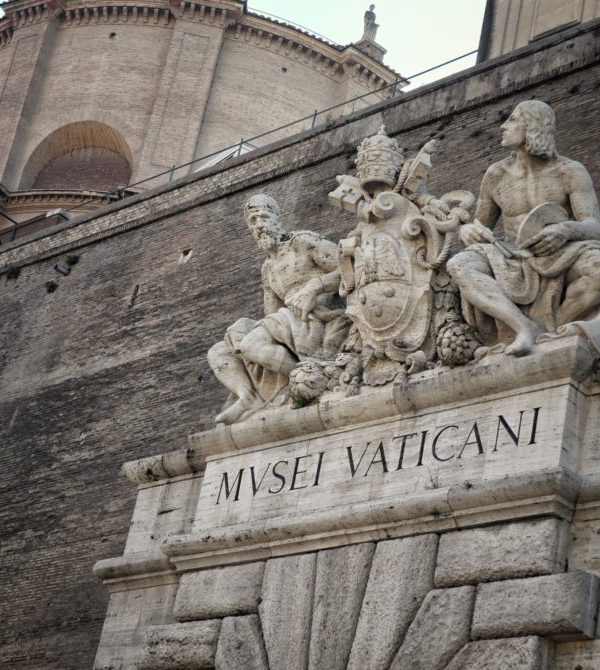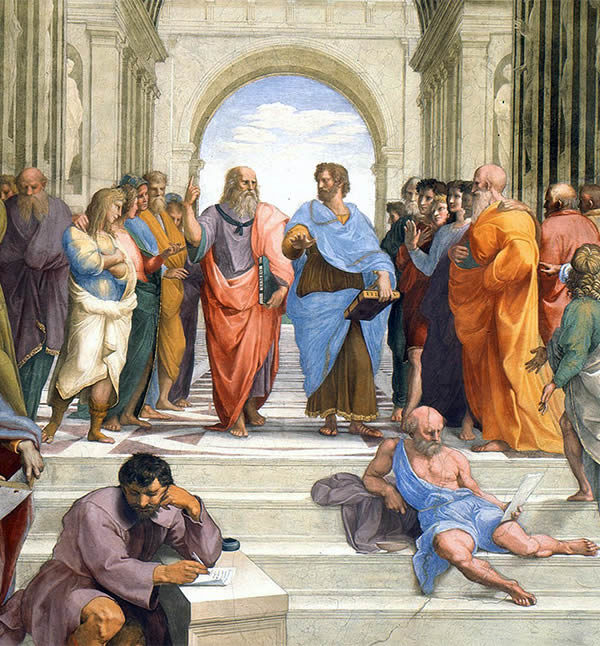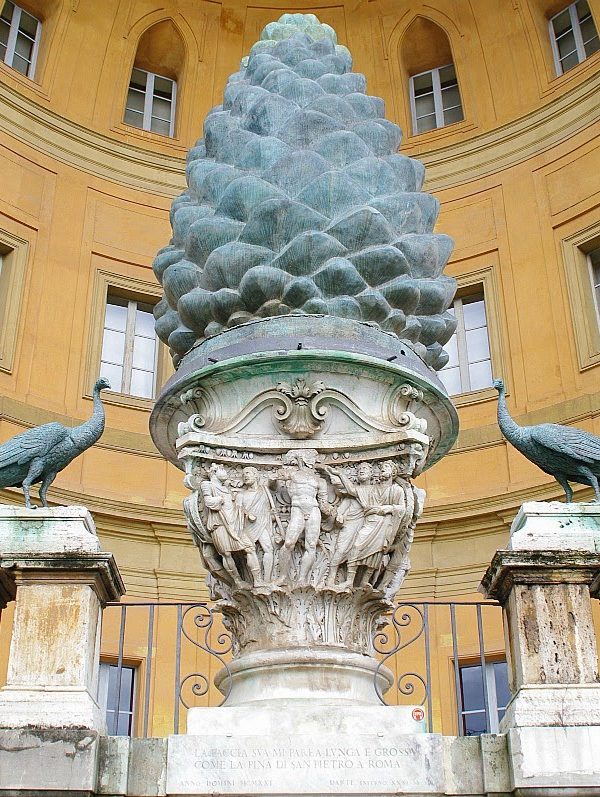Leaving the so-called Atrium of Corazze on the left and crossing the Atrium of the Four Gates, you reach the Cortile della Pigna Vatican courtyard, in the complex of the Vatican Museums, obtained in part from the sixteenth-century space of the Belvedere. The latter was designed in 1506 by the architect Donato Bramante, on the order of Julius II, to connect the Palazzetto di Innocenzo VIII (1484-1492) with the Sistine Chapel, built by Sixtus IV (1471-1484).
At the time, this Vatican courtyard was divided into three areas with different heights, connected to each other by elegant ramps, and was closed laterally by buildings marked by pilasters surmounted by large arches. The pavement and the lateral arms were then slightly inclined towards the Sistine Chapel, so as to make the courtyard appear, to those who looked out from the papal apartments, even wider than reality. At the north end, a large niche had been provided to conclude the perspective escape: it was built, as can be seen currently in the so-called Cortile della Pigna, in 1565 by the architect Pirro Ligorio taking the dome of the Pantheon as a model. The striking prints from the first half of the 16th century can provide an idea of the festivals and carousels that took place here.
At the end of 1500 the Cortile del Belvedere (courtyard) was divided into two parts by the construction of a transverse arm of the Library of Sixtus V (1585-1590). Then in 1822 a second transversal building was built called “Braccio Nuovo”, intended to contain a collection of statues. Today there are therefore three Vatican Courtyards: the Cortile della Pigna, the Cortile della Biblioteca and the Cortile del Belvedere.
The Cortile della Pigna is so called by a colossal bronze pine cone almost 4 meters high which in classical times was located in Rome near the Pantheon, from which the “Pigna district” took its name; in the Middle Ages it was probably brought to the atrium of the ancient St Peter’s Basilica, from where it was moved here in 1608. On the sides are two bronze peacocks, copies of originals from the 2nd century AD, preserved in the Braccio Nuovo.
At the center of the vast open space are two concentric spheres (Sfera con sfera) by the sculptor Arnaldo Pomodoro (1990).



